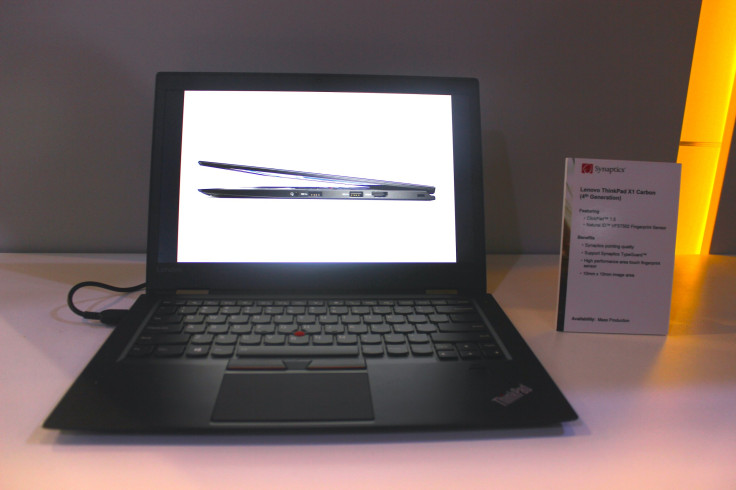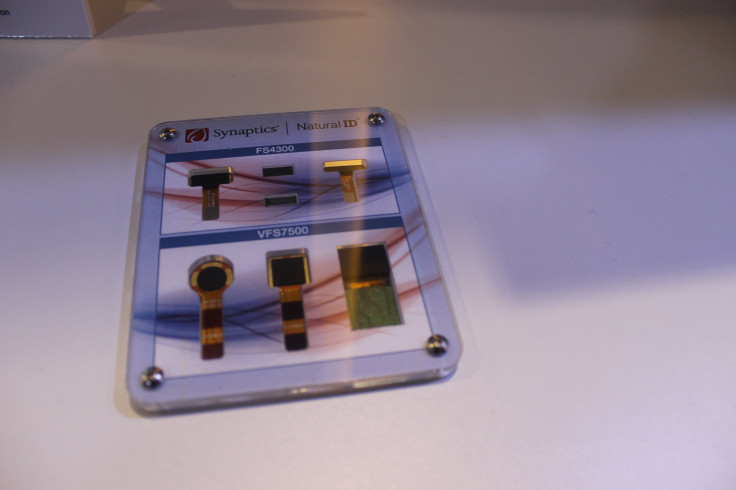For many years, the electronics market has seen features made popular by computers transition to portable devices, such as smartphones and tablets. Now, the reverse is occurring: as more smartphones begin to adopt touch-based fingerprint sensors, the feature is also coming to computers.
“Most laptops for a while have had a swipe sensor for fingerprint and now what you’re starting to see is a an area sensor because the user experience is that much more compelling,” Synaptics Director of Concept Prototyping, Andrew Hsu told iDigitalTimes.
Devices like the fourth-generation Lenovo ThinkPad X1 Carbon are introducing Synaptics’ “Natural ID” touch-based fingerprint sensors for laptops and computers to the market. The laptop was showcased at Mobile World Congress in Barcelona last month.

The evolution of fingerprint sensors on smartphones can easily be traced through the launches of several flagship devices. The iPhone 5s launched in 2013 with a touch-based or area-based fingerprint scanner branded as TouchID. Samsung followed suit in 2014 with its swipe-based fingerprint scanner branded as Finger Sensor on the Galaxy S5.
Samsung opted for a swipe-based sensor to differentiate itself from major rival, Apple. However, other competitors, including HTC, LG and Huawei all opted for touch-based sensors. Samsung then conceded to including touch-based sensors on devices including the Galaxy S6, Galaxy Note 5 and the most recent Galaxy S7.
Meanwhile, swipe-based sensors were already being featured on computers. The ergonomics of swipe-based fingerprint sensors makes much more sense on a laptop than it does a smartphone. But Synaptics still saw room for improvement. A touch-based sensor creates the opportunity for faster and more accurate fingerprint reading regardless of the type of device,.
“People are used to the convenience of area-based sensors for mobile phones. I think it’s a natural progression for laptops design to now incorporate area sensors,” Hsu said.
While the novelty of using your finger to unlock a device has died down, manufacturers have realized fingerprint scanners are a great way to differentiate their products, especially in the ubiquitous laptop market. Instead of having a fingerprint scanner as a separate module, it can be integrated into a laptop’s touchpad, similar to how many smartphones have fingerprint scanners embedded within their home buttons. For both laptops and smartphones alike, manufacturers can determine the size, shape and location of a fingerprint scanner.
“Some OEMs just prefer to have a customized to order type scenario where the touchpad itself can be replaceable with or without the fingerprint sensor,” Hsu told iDigi. “Others want to incorporate [a fingerprint sensor] into the industrial design.”
The latest Lenovo ThinkPad X1 Carbon features a 10x10mm sensor, which allows users to register a fingerprint in between four to six touches, Synaptics Senior Director of Marketing and Communications Alfred Woo told iDigital Times. Typically, users must press their finger to a smartphone fingerprint scanner 10 to 20 times, in different positions, before a fingerprint can be properly registered.
The laptops’ scanner can register unlimited fingerprints. However, Woo admits one logistic that hasn’t yet been resolved -- catering to left-handed users of a component embedded into the device’s frame.













![[EG April 19] Best 'Stardew Valley' Mods That Will Change](https://d.player.one/en/full/226012/eg-april-19-best-stardew-valley-mods-that-will-change.png?w=380&h=275&f=955520b8313253ee3c39c791f6210f38)



